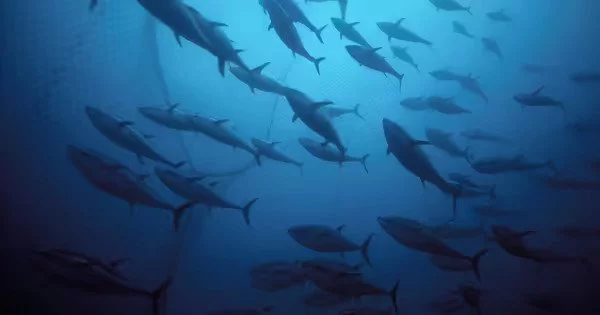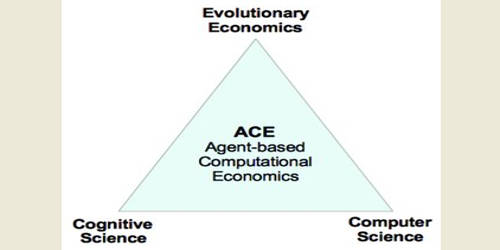Shifting water depth can have a significant impact on the biodiversity of fish species in aquatic ecosystems. Changes in water depth can affect a variety of environmental factors that influence fish populations, including temperature, dissolved oxygen levels, and access to food and shelter.
In general, shallow waters tend to have higher temperatures than deeper waters, which can limit the distribution of certain fish species that prefer cooler temperatures. Shallow waters also tend to have lower dissolved oxygen levels, which can limit the abundance of certain fish species that require high levels of oxygen to survive. On the other hand, deeper waters tend to provide more stable thermal and oxygen conditions, which can support a wider range of fish species.
Fish, the most biodiverse vertebrates in the animal kingdom, present evolutionary biologists with a conundrum: the world’s tropical waters have the most species richness, but the fish groups that generate new species the fastest live in colder climates at higher latitudes.
A new Yale study sheds light on this conundrum. The ability of fish in temperate and polar ecosystems to transition from shallow to deep water causes species diversification, according to the researchers. Their findings, published in the journal Nature Communications, suggest that as climate change warms the oceans at higher latitudes, it will impede fish species evolution.
The fish clades contributing the most fish diversity in today’s oceans are leveraging the water column and, in particular, ocean depths to diversify.
Sarah T. Friedman
“The fish clades contributing the most fish diversity in today’s oceans are leveraging the water column and, in particular, ocean depths to diversify,” said lead author Sarah T. Friedman, a G. Evelyn Hutchinson postdoctoral associate at Yale. “Fish that venture into the deep ocean are almost always found in high latitudes, where it is easier to move up and down the water column. Climate change is causing the most drastic warming in these areas, which threatens to disrupt speciation by making it more difficult for fish to change depths.”
Friedman, now a research fish biologist at the National Oceanic and Atmospheric Administration, coauthored the study with Martha Muñoz, an assistant professor of ecology and evolutionary biology in Yale’s Faculty of Arts and Sciences, and an assistant curator of vertebrate zoology at the Yale Peabody Museum.
The researchers analyzed existing data on the global species occurrence of 4,067 fish species, including information on species geographic range and speciation rate, for the study. Their research modeled how frequently fish lineages might be expected to transition across ocean depths. The researchers were able to compare the number of observed transitions in specific lineages by laying out a distribution of anticipated shifts in depth. They discovered that species-rich, high-latitude lineages such as eelpouts, rockfishes, flatfishes, icefishes, and snailfishes moved up and down the water column more frequently than expected. Meanwhile, tropical lineages with high diversity, such as gobies and wrasses, changed depth less frequently than predicted.

Fish clades, evolutionary lineages that share a common ancestor, that can freely disperse along the depth gradient may be more likely to capitalize on novel resources or niches at specific depths and become isolated from other members of their group, the researchers said. This can lead to repeated local adaptation and the evolution of new species.
Many factors, such as water temperature, pressure, and light penetration, can influence a fish’s ability to move between depths. Temperature, according to Friedman and Muoz, plays an important role in the ability of high-latitude fish clades to transition along the water column. Fish clades that live in colder water have an easier time traveling deep into the ocean, where water temperature drops dramatically. Tropical fish, which spend their lives in warm, shallow waters, face a steep thermal barrier when transitioning to the deep ocean, according to the researchers.
The existing high biodiversity in tropical waters may be a relic of a time when warmer regions were hotbeds of species generation, but most diversification began closer to the Earth’s poles over time, they explained.
However, at higher latitudes, this biodiversity engine is vulnerable to climate change. Because the water profile is more uniform at higher latitudes than in the tropics, the fish that live there are physiologically fine-tuned to those conditions, according to Muoz. A one-degree temperature change will be physiologically more difficult for them than for a more thermally generalist organism.
“As the oceans warm, organisms might face steeper barriers to dispersal across the depth column,” Muñoz said. “Over time, I think we’ll see a slowdown of this engine of biodiversification.”
Overall, shifting water depth can be an important factor in shaping the biodiversity of fish communities in aquatic ecosystems. By understanding how different fish species respond to changes in water depth, we can better manage and conserve these valuable resources.
















